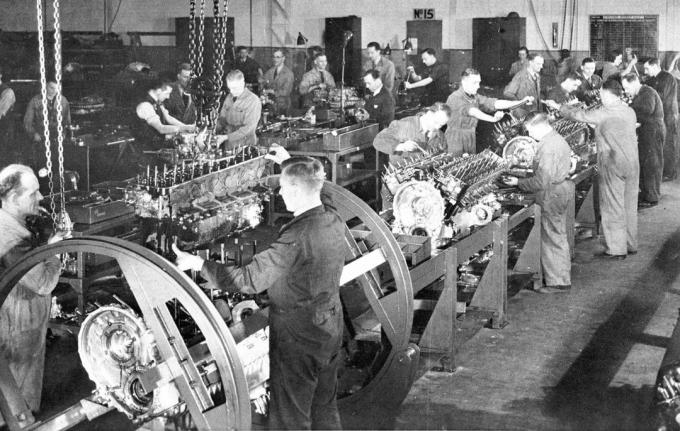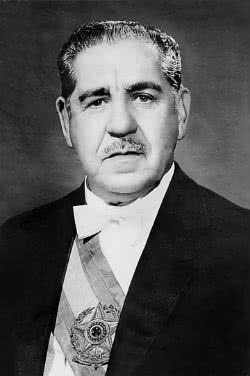The Industrial Revolution consists of a period of great economic and social changes that were carried out between the 18th and 19th centuries in Europe, especially in England.
Its most important feature was the change in production modes, marked by the transition of manufacturing processes, which replaced the artisan work used until then.
How did the Industrial Revolution come about?
The Revolution was a process that involved several transformations in economic and social aspects, which took place especially from this phenomenon of transition in industrial production.
In addition to the modification of craft work by work done by machines, the energy of human work was also replaced by motive energy (energy generated by water or steam).
This change saved time from work and also increased production of goods and consequently made the profit grow of entrepreneurs.
 Workers and the mechanization of factories.
Workers and the mechanization of factories.
In general, in addition to marking the transition from manufacturing to industrialization, the Industrial Revolution also made possible the phenomenon of Enlightenment.
It allowed the triumph of the principles of reason and belief in the advances of science, in opposition to the ideas of faith and religion that were predominant until then.
See more about the meanings of Enlightenment and manufacture.
Phases of the Industrial Revolution
First phase
The first stage of the Industrial Revolution began in England in the 18th century and expanded to the European continent, in countries such as France, Belgium and Switzerland. This period lasts until the 1860s when new countries start to invest in industrial production.
At that time, the process of mechanization of factories was the most prominent occurrence. The improvement of steam engines was also important to the development of the revolution.
The emergence of new means of communication also represents the process of industrialization. Examples are: the creation of photography, the telegraph, the telephone and later the electric light.
Second level
Occurring during the period from 1860 to 1900, the second stage of the Industrial Revolution already had the adhesion of countries like Germany, France, Russia and Italy.
Scientific and technological innovations, which improved the performance of the industry, were very important at that time. Some examples are: use of electricity and petroleum-derived fuels, invention of the steam locomotive and the development of chemical products.
third phase
For some historians, the advances in technology of the 20th and 21st centuries are considered to be the third stage of the Industrial Revolution.
The creation of computers, televisions, faxes, cell phones and advances in engineering would be some of the innovations of this phase.
Causes of the Industrial Revolution
The causes of the Industrial Revolution brought about great and important changes in the economic, social and political systems of England from the 18th century onwards.
There was a surplus of available labor, the result of a rural exodus process. The British naval fleet carried out commercial transactions with different regions of the world.
These events reflected the enormous market potential of England and consequently the accumulation of capital for the bourgeoisie, which made investment in industries viable.
When realizing that there could be an increase in production with investment in machines aimed at industrial production, the bourgeoisie starts investments in improvements, increasing its production in large scale.
See also the meanings of Industrial Capitalism, Rural exodus and Bourgeoisie.
Among the causes that made the revolution possible are:
- Demographic growth in Europe.
- Emergence of parliamentarism.
- Reduced use of available labor due to the growing use of machines.
- Development of the metallurgical and steel industry.
- Technical innovations.
- Abundant and cheap raw materials.
- Introduction of cotton cultivation, as the British bought cotton that they later turned into textile products.
Also read the meaning of parliamentarianism.
Consequences of the Industrial Revolution
The change in production was reflected in other processes, such as: manufacturing of chemical products, iron production, greater efficiency of energy generated by water and use of steam energy.
It also helped in the development of machine tools, in addition to replacing wood and other biofuels with charcoal.
With this advance and so many changes, factories began to expand. Aiming at profit, entrepreneurs exploited workers, who worked up to 15 hours a day in exchange for a low wage.
Faced with these situations, some workers organized movements to fight for better working conditions. Industry employees created the first movements similar to unions, called trade unions, which had the objective of improving working conditions.
O Chartism, for example, was a social movement, started in the 19th century, which used the political route to claim workers' rights. There were more violent movements, such as the Luddism, which invaded factories and destroyed equipment as a form of protest and revolt.
See also: 2nd Industrial Revolution, 3rd Industrial Revolution and 4th Industrial Revolution.



